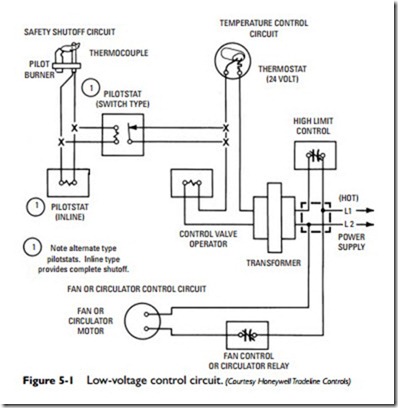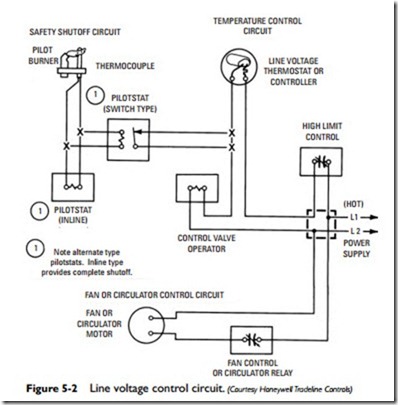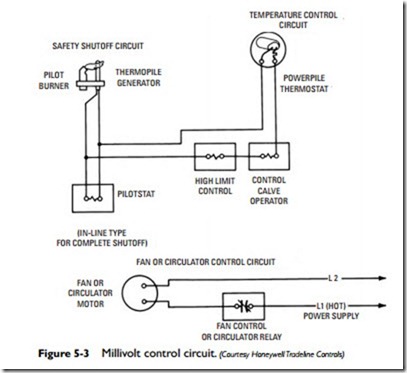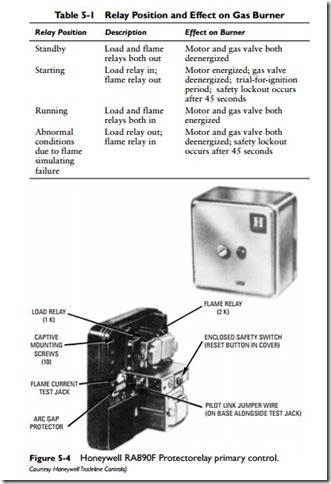Gas Burner Primary Control
The primary control shown in Figure 5-4 is a solid-state electronic relay used on gas, oil, or combination gas-oil burners. It is designed
to provide operational control of the burner in response to the room thermostat and limit controls, and to instantly shut off the burner in the event of flame failure. Figure 5-5 illustrates a typical wiring diagram for a Honeywell RA890F Protectorelay primary control used in a control circuit for a gas-fired boiler.
This primary control is used with rectification-type flame detec- tors to sense the presence or absence of flame. The heart of the flame detector circuit in a gas-fired system is an electrode inserted in the pilot flame. In the wiring diagram, shown in Figure 5-6, the flame rod is connected to terminal F of the primary control.
In the event of pilot flame failure, the flame detector circuit responds to control the gas valve in the manifold. When there is an absence of flame, the primary control shuts off the supply of gas by closing the gas valve or by keeping it closed if it is not already open.
These units are designed to be fail-safe. Abnormal conditions in the flame detector circuit, such as an open circuit, short circuit, or current leakage to ground, simulate absence of flame and cause the system to shut down. Safety controls such as temperature or pressure limits or low-water cutoffs are connected ahead of the switching terminals of the relay so that shutdown of the burner occurs even in the event of a relay malfunction such as fused contacts.
The main valve circuit is deenergized 8⁄10 of a second after flame failure occurs. On starting up or after flame failure, a trial-for-ignition period of approximately 45 seconds maximum occurs. During this ignition period, only pilot gas is allowed to flow to the burner. If the flame circuit is not completed within this time period, safety lockout of the relay occurs, causing a total shutdown of the system. Manual reset is then required to restart.
Two sets of relays are contained in a Honeywell RA890F Protectorelay primary control. The load relay (left hand) supplies current to the No. 3 terminal to control the blower motor. The flame relay (right hand) responds to the load relay but only if allowed by the flame-detecting electronic network of the relay. The flame relay can supply current to the No. 5 terminal controlling the gas valve only if the load relay has also pulled in.
The load relay is responsive to the thermostat or other operating control connected to the T/T terminal provided that safety controls, located in the 16– circuit, indicate that safe conditions exist for main burner operation.
On an interruption of power to the No. 1 and No. 2 terminals of the primary control, the relay returns to the standby position. When power is restored, normal operation is resumed except that the starting cycle is maintained longer than usual while the vacuum tube is warming up. Relay positions and their effect on the burner are listed in Table 5-1.




